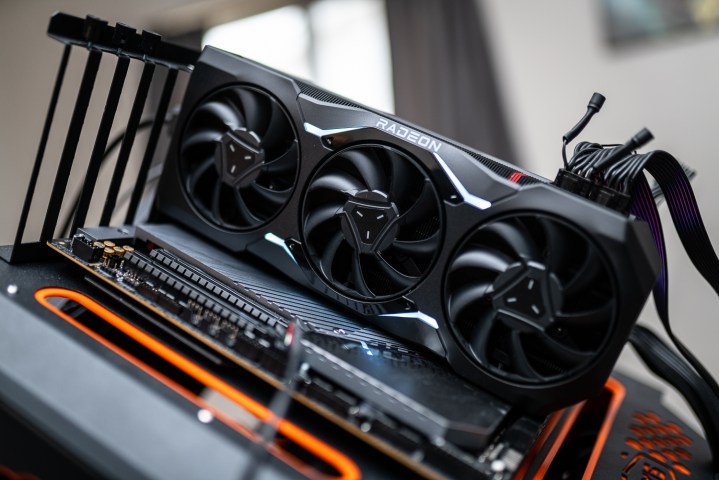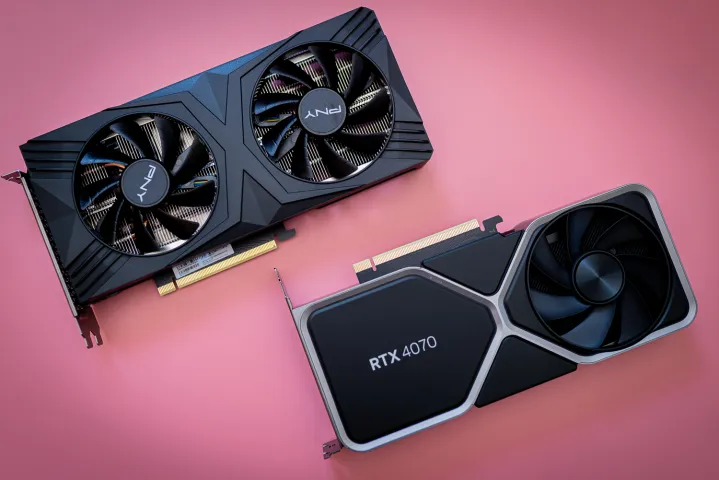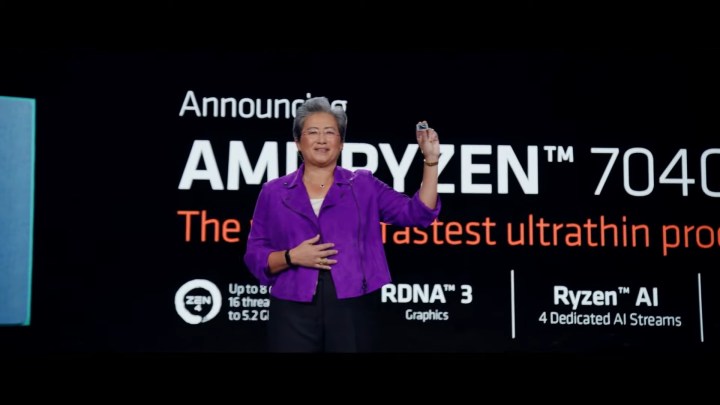Since the launch of the Radeon RX 7900 XTX and RX 7900 XT, AMD has been awfully quiet on the graphics card front — and it couldn’t have picked a worse time to go radio silent.
With Nvidia quickly making its way through its RTX 40-series lineup, AMD doesn’t have much more time before it completely falls behind. What’s going on with Team Red?
Rise and fall

Nvidia has dominated the high-end sector of the GPU market for a while, but in the last few years, AMD made for a solid alternative for the more budget-conscious users.
Where Nvidia kept pushing its prices higher and higher still, adopting a frankly outrageous pricing strategy, AMD has managed to keep things a little more reasonable. That, combined with the improvements in performance brought on by RDNA 2, helped AMD claw its way up from GPU purgatory.
In fact, AMD’s RX 6000 series graphics cards continue to stay relevant if you’re not too bothered about not having access to Nvidia’s tech, such as DLSS 3 and superior ray tracing.
AMD’s options are cheaper, but they’re not better.
Cards like the RX 6950 XT still do a good job at 4K, even with the latest games. This makes GPUs like Nvidia’s RTX 4090 that much less desirable. You simply don’t need to shop within the latest generation for solid gaming performance, and this helps AMD keep pulling in sales.
The launch of RDNA 3 in December 2022 marked a promising moment for AMD. Nvidia already had a couple of Ada Lovelace GPUs at that point, but both were stupidly expensive — the RTX 4090 cost $1,600 and up, and the RTX 4080 wasn’t much better at $1,200.
I had great hopes for AMD’s RX 7900 XTX and RX 7900 XT. While the former was a better deal than the latter, both were cheaper than everything Nvidia was offering at the time in the RTX 40-series. The RX 7900 XTX, a rival to the RTX 4080, had a $1,000 list price, followed by the RX 7900 XT for $900. Still not cheap, but better.
But now, a few months later, things are starting to look a little bit grim for Team Red.
AMD opts out of the race

My hopes for the RDNA 3 lineup remained high for a while. AMD seemed eager to focus on value and performance per watt, choosing not to chase Nvidia’s RTX 4090 for the time being — or perhaps even not at all.
In late 2022, AMD executives Rick Bergman and David Wang talked to IT Media, a Japanese website. Bergman told the publication that, technically, it is possible for AMD to compete against Nvidia’s behemoth of a graphics card, but it simply chooses not to.
Bergman said that the company refuses to adopt Nvidia’s strategy, which is to chase performance at any cost. Instead, it hopes to fit into the mainstream part of the market and make GPUs for more people to enjoy. After all, most people really don’t need an RTX 4090.
Some criticized AMD for not trying to compete, but the choice made sense at the time. Even in the previous generation, AMD has often kept its prices and wattages more reasonable. It may not have made the greatest GPUs if all you want is pure gaming performance, but it was still good enough for most gamers.
Of course, this type of strategy only works if AMD actually releases new graphics cards to keep trying to claim some of that midrange part of the market … which, currently, is once again slipping entirely into Nvidia’s hands.
Nvidia is inching toward affordable

I’m the last person to ever call Nvidia GPUs affordable, but the fact is that Nvidia is slowly getting there.
First, it launched the RTX 4070 Ti at an $800 list price. That was still way too much for what the GPU was able to offer — it’s around 12% slower than AMD’s RX 7900 XT.
On the other hand, it was considerably cheaper than its more high-end siblings, which opened up the RTX 40-series lineup to a whole new group of PC gamers. For $800, consumers could get access to Nvidia’s (admittedly impressive) DLSS 3 and smooth 1440p gaming. AMD could offer that for less with its last-gen cards, but it couldn’t match DLSS 3, so the RTX 4070 Ti was a strong contender regardless of its poor value.
AMD has been silent about offering some cheaper options.
Now, Nvidia followed up by launching the RTX 4070 earlier this month. It received favorable reviews and seemed to be more worth the money at $600. However, the GPU is actually not selling well and might see some price cuts in the near future.
Nvidia still has a few more GPUs in the range that might become fan favorites if they’re priced correctly. The RTX 4060 Ti is rumored to cost $450 and is said to arrive in May. The RTX 4060 will surely follow at some point and be cheaper still.
Meanwhile, AMD is still sitting on two GPUs in the $1,000 range, and it hasn’t said anything about what comes next.
Where’s AMD?

Realistically, AMD is not a big player in the discrete GPU market regardless of what it does. The latest market report from Jon Peddie Research shows that in the fourth quarter of 2022, Nvidia controlled 82% of the discrete graphics card market. The remaining 18% was split in half between AMD and Intel.
AMD’s numbers are probably higher, because there’s no way so many people suddenly decided it was time to buy an Arc A770 during what was a very weak quarter for discrete graphics. Still, AMD is a small fish in this Nvidia-shaped pond, but it’s important for it to continue playing its part, and perhaps even grow its market share in the GPU sector. Nvidia could use some healthy competition.
With all that in mind, where’s AMD?
This is truly the worst time for AMD to go quiet in regard to the rest of the RDNA 3 lineup. With Nvidia’s less-than-great pricing strategy, AMD could be scoring some big wins now if it made sure to stay present. As it is now, a lot of the market share is falling right into Nvidia’s hands, with no attempt at competition from AMD.
I’m sure that AMD will launch new discrete GPUs soon enough, and hopefully, it will stick to its plan to aim for the mainstream market. If these cards can be cheaper than Nvidia’s, AMD may be successful.
However, the longer AMD waits and doesn’t even try to drive up the hype for its upcoming products, the harder it will be for it to convince gamers to switch from Nvidia to AMD. People who buy a midrange Nvidia GPU now will not need an AMD card in a few months’ time. At this point, time matters just as much as pricing and performance.
I really hope that AMD will come up with an answer to Nvidia soon. It’s going to be an arduous climb back up if it stays right where it is now.
Editors’ Recommendations
